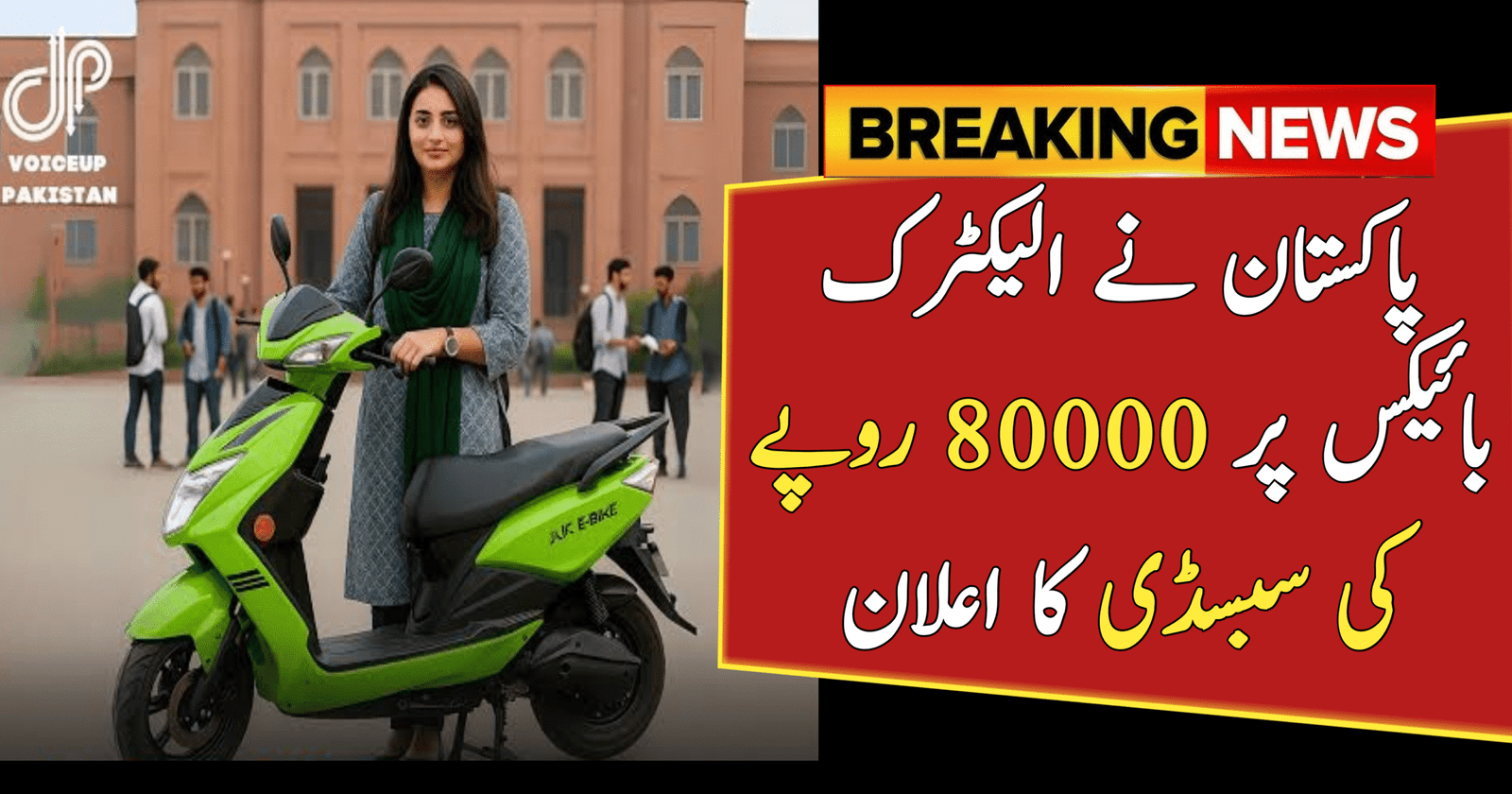In a big step toward a cleaner and more affordable transport future, the Govt of Pakistan has officially announced an Rs 80000 subsidy on electric bikes under the new National Electric Vehicle (NEV) Policy 2025–30. This move aims to make electric mobility accessible to everyone from students and employees to delivery riders while reducing Pakistan’s fuel import bill and promoting a greener environment.
Officials say the Electric Bike Subsidy 2025 is part of the government’s long-term plan to shift the country toward electric vehicles (EVs) and encourage local manufacturing of EV parts such as motors, batteries, and chargers.
Read More: PAVE Scheme 2025 Two Wheelers Electric Bike
Table of Contents

Overview of the Rs 80000 Subsidy on Electric Bikes
| Category | Details |
| Program Name | Electric Bike Subsidy & EV Policy 2025–30 |
| Launch Year | June 2025 |
| Policy Duration | 2025 – 2030 |
| Subsidy Amount | Up to Rs 80,000 (based on model) |
| Target Vehicles | Electric bikes and e-rickshaws |
| Application Method | Online registration via government EV portal |

Key Features of EV Policy 2025–30
The new EV Policy provides a complete roadmap for Pakistan’s transition to clean mobility.
- Financial Support:
- Rs 80,000 subsidy for e-bikes
- Rs 65,000 for two-wheelers
- Up to Rs 400,000 for e-rickshaws
- Up to Rs 15,000 per kWh subsidy for electric cars
- Local Manufacturing Targets:
- Pakistan aims to localize battery and motor production within 3 years.
- By 2030, 30% of new vehicle sales in the country should be electric.
- Charging Infrastructure:
- Plan to install 3,000 EV charging stations nationwide by 2030.
- Fast chargers to be placed along highways and motorways.
- Government-approved reduced electricity tariff of Rs 39.70/kWh for EV charging.
Read More: PAVE NEV Balloting 2025
Why the Government Introduced This Subsidy
Pakistan imports billions of dollars’ worth of fuel every year. Switching to electric transport could save up to 2 billion litres of petrol annually and significantly cut pollution levels in major cities like Lahore and Karachi. The initiative will also boost local manufacturing, create thousands of new jobs, and attract foreign investment in the green energy sector.
How to Apply for the Electric Bike Subsidy
| Step | Details |
| Step 1 | Check eligibility (Pakistani citizen, age 18–65, select approved e-bike model) |
| Step 2 | Register online on the government EV portal |
| Step 3 | Submit CNIC and payment details for verification |
| Step 4 | Pay remaining amount after subsidy |
| Step 5 | Receive e-bike delivery and registration from authorized dealer |
Benefits for Citizens and Industry
For Consumers:
- Huge cost savings with the Rs 80,000 subsidy
- Lower running cost compared to petrol bikes
- Almost zero maintenance due to fewer moving parts
For the Economy:
- Reduction in oil imports
- Promotion of local industries
- Creation of new technical jobs
For the Environment:
- Cleaner air in cities
- Contribution to global climate goals
- Less noise and air pollution
Read More: Register for PSER for Rashan Card
Challenges Still Ahead
Although the policy is a strong start, there are still hurdles to overcome. Pakistan needs better charging infrastructure, public awareness campaigns, and transparent subsidy disbursement systems. Experts also highlight the need to address supply chain limitations to achieve 90% localization by 2030.
Read More: Monthly Stipend for 5000 Visually Impaired Persons

Final Thoughts
The Rs 80,000 Electric Bike Subsidy isn’t just a financial relief it’s a step toward a sustainable future. With proper execution, Pakistan can drastically cut down fuel dependency, reduce emissions, and modernize its transport system.
If implemented fairly, this policy can reshape Pakistan’s streets with more electric bikes, cleaner air, and a stronger local economy.
Related Posts












